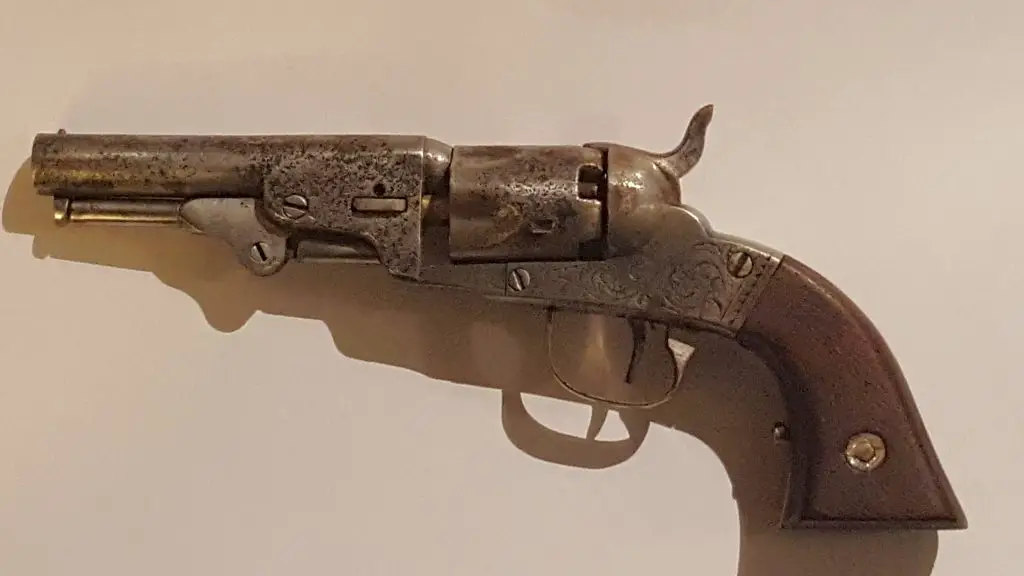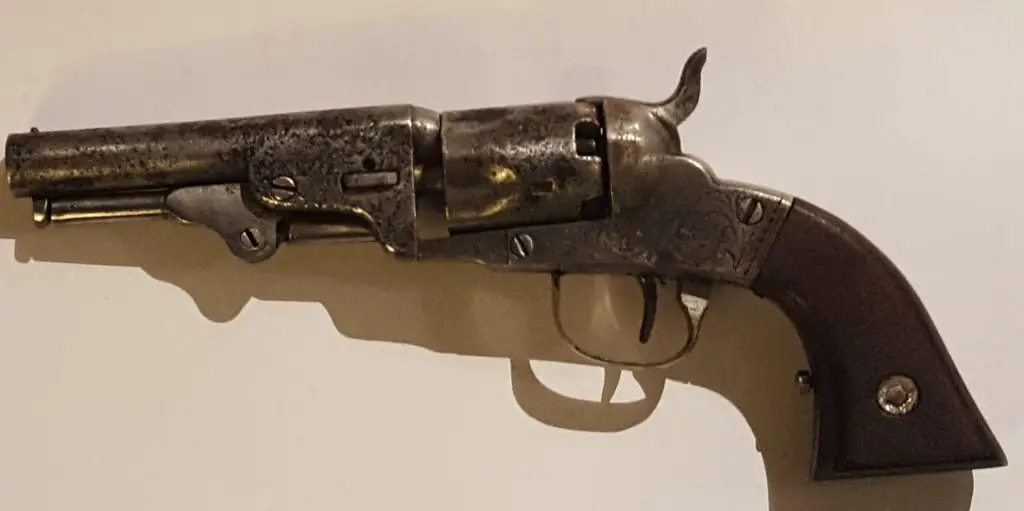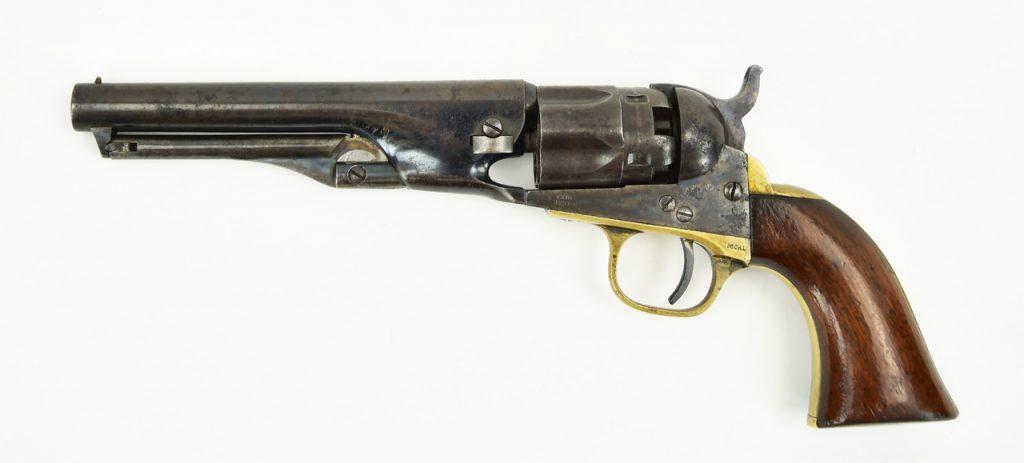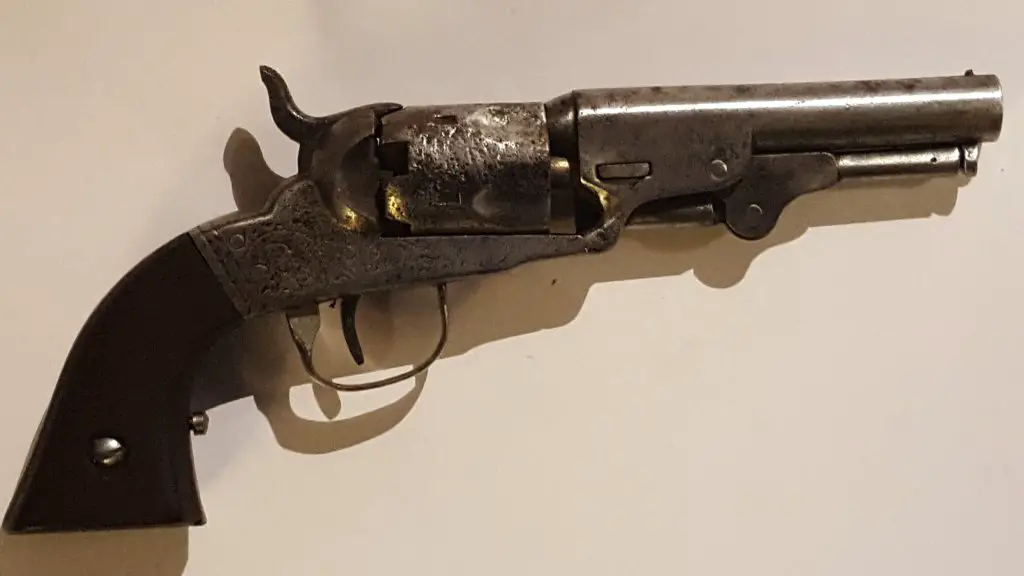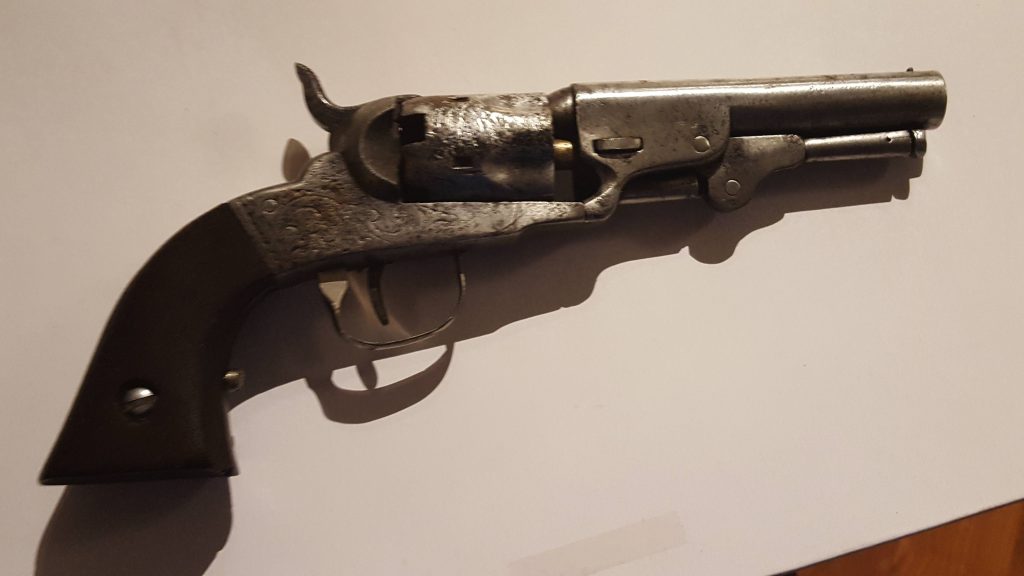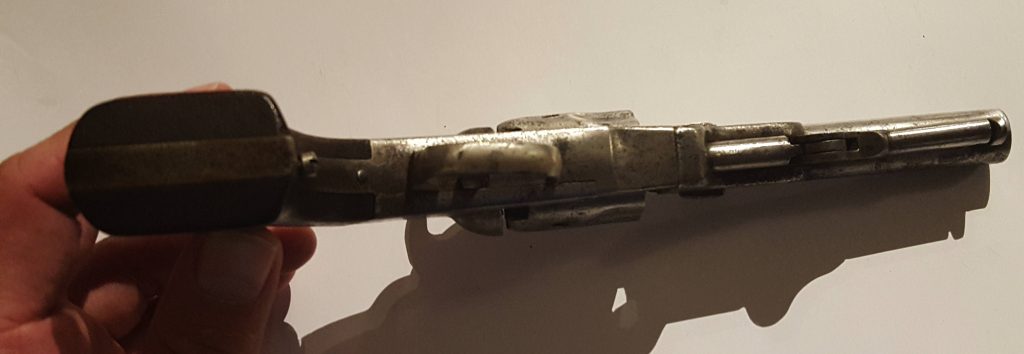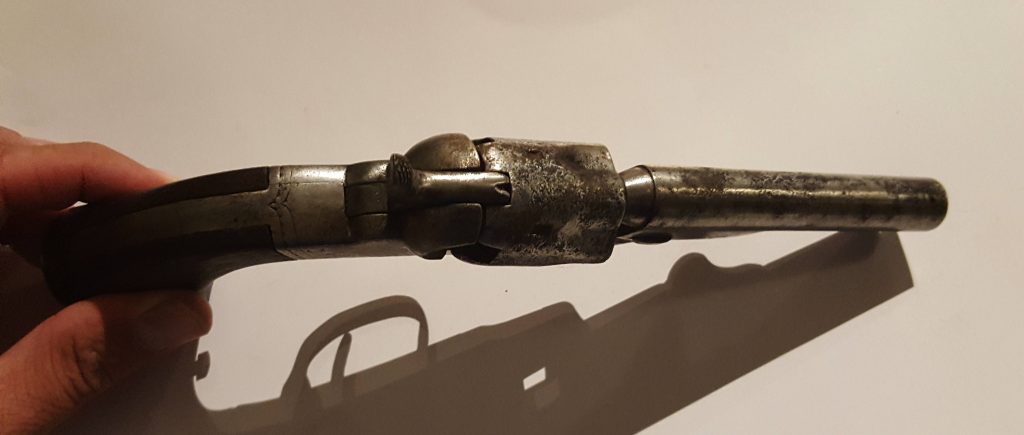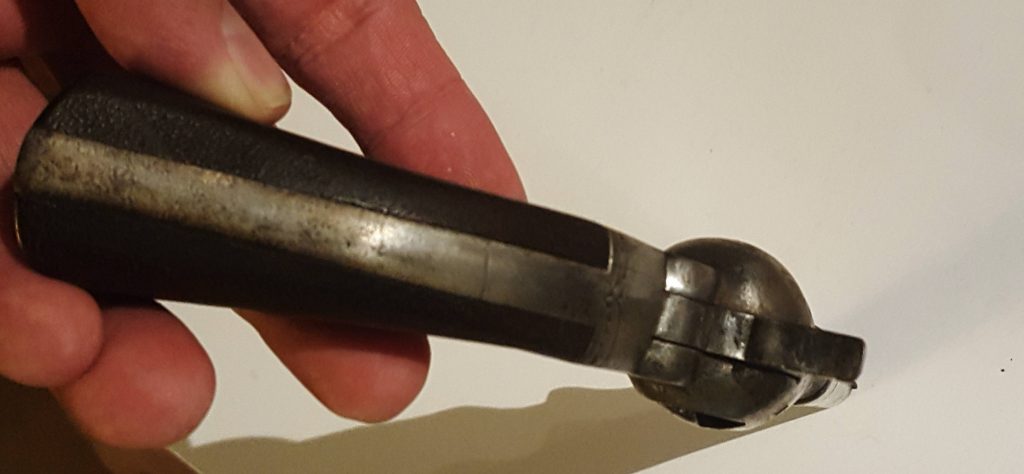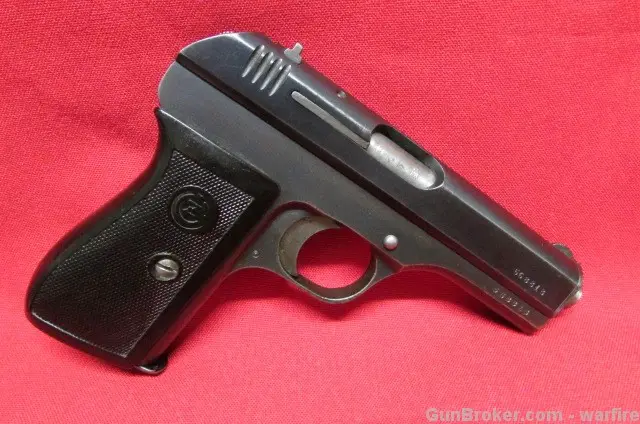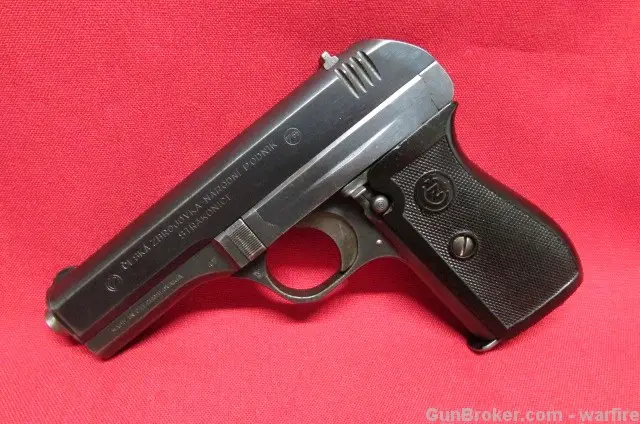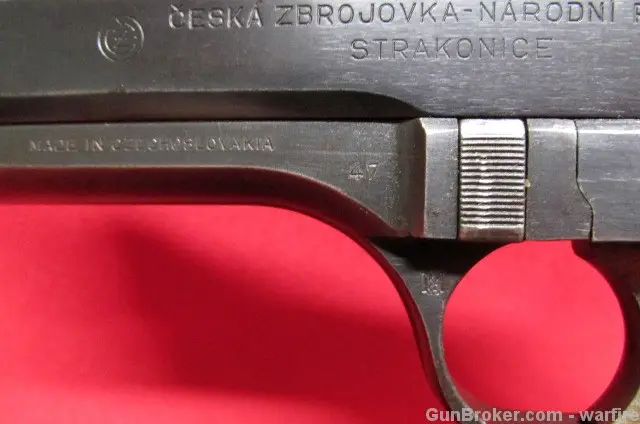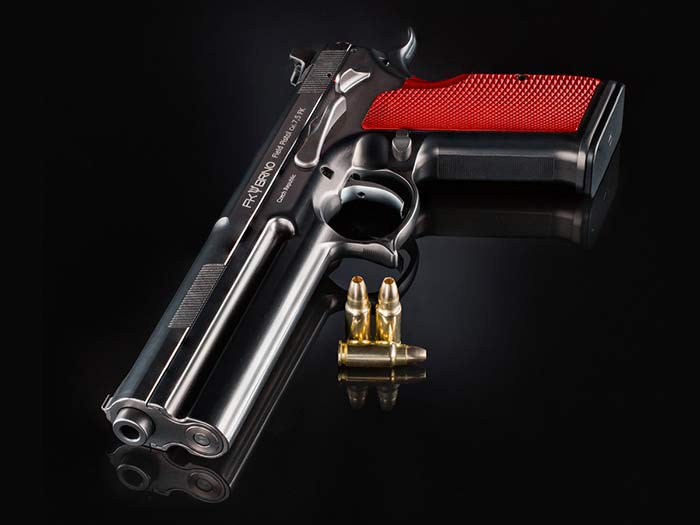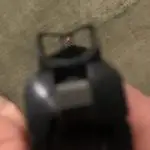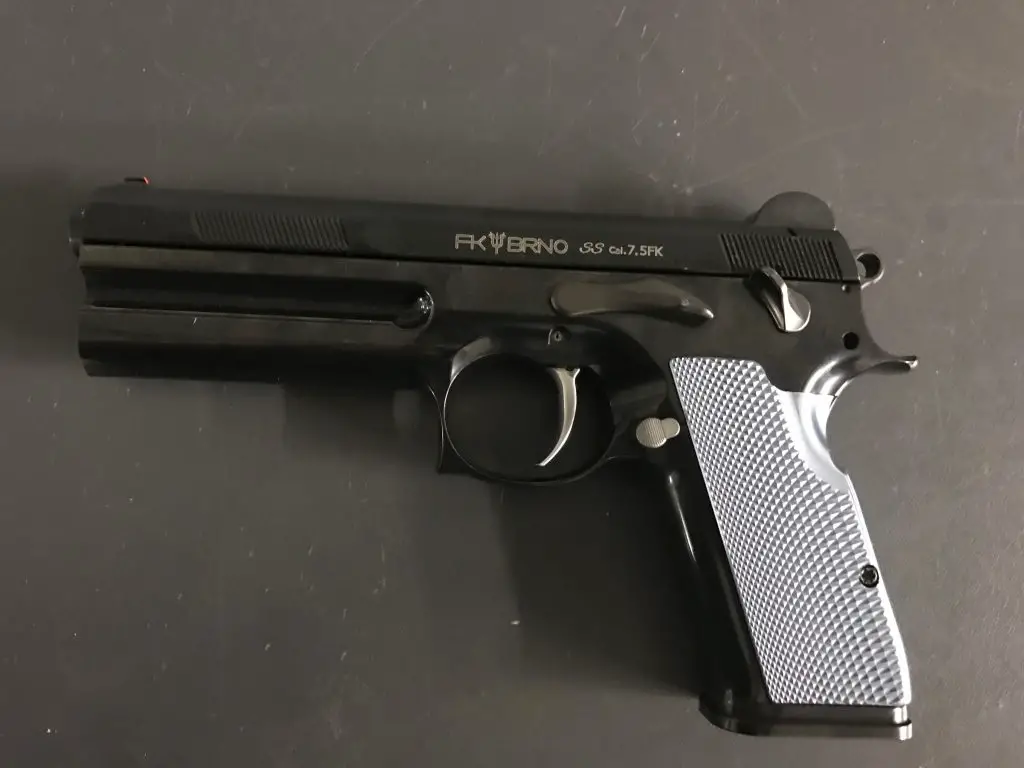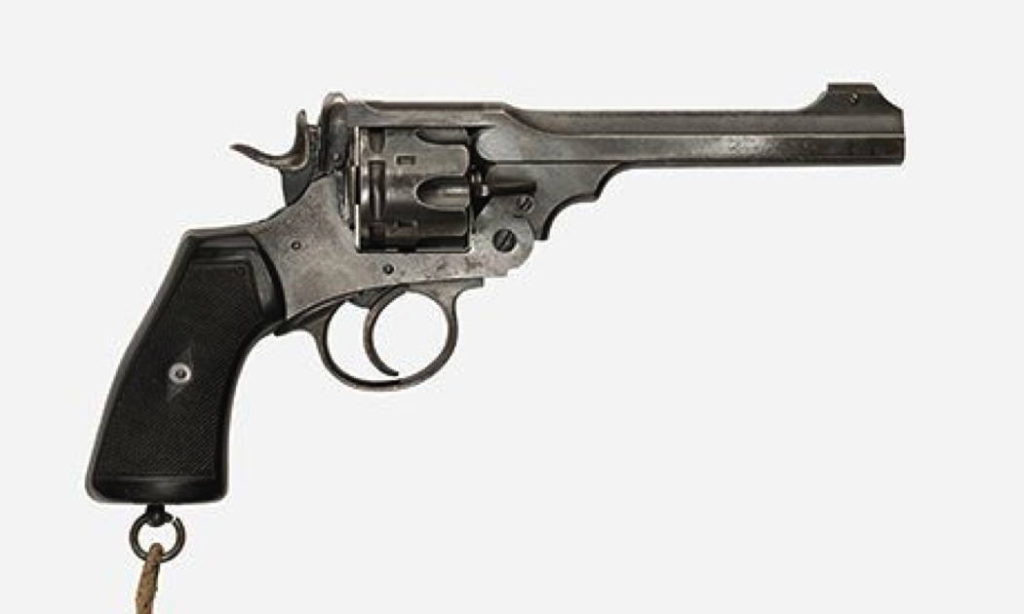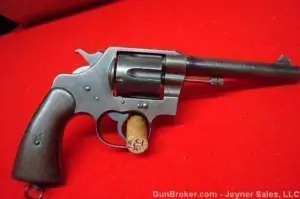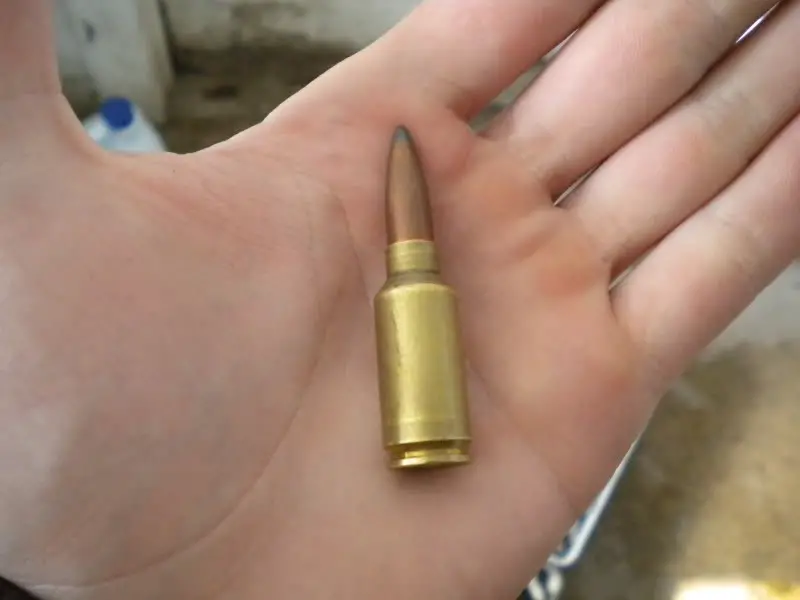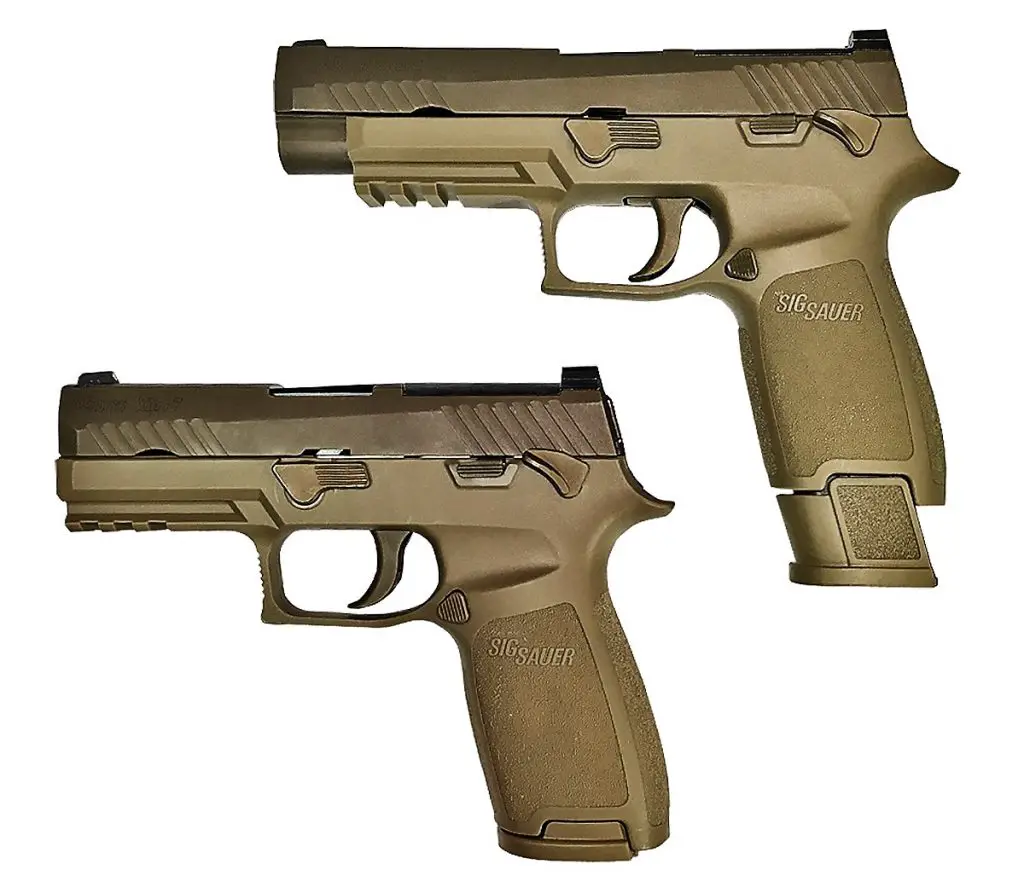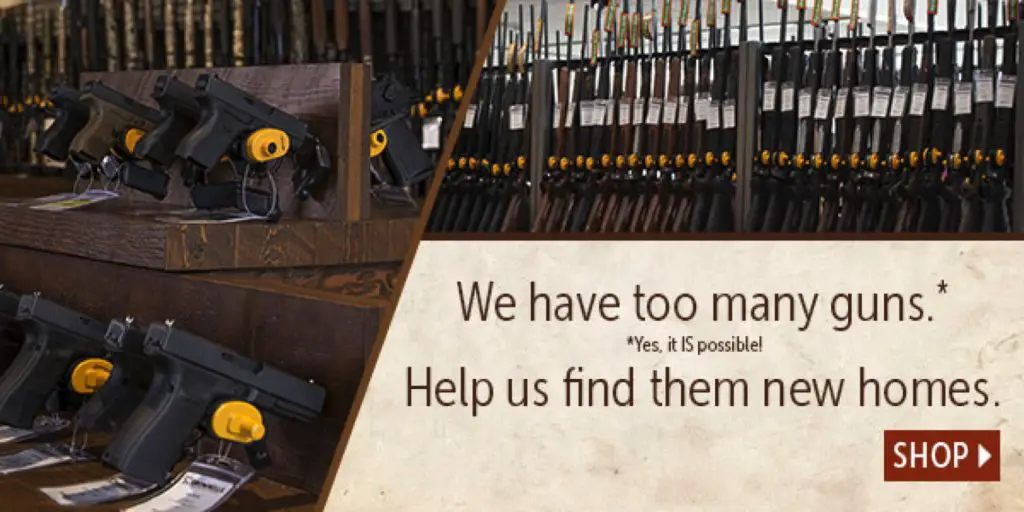Category Archives: Pistols and Revolvers
Here’s Ian of Forgotten Weapons with a capsule history of Colt, currently holding down the title of the Most Mismanaged Company in the Gun Racket. Seemed timely, with Colt having purged the Custom Shop lately, in an overall downturn in the industry that has seen Remington lay off a couple of hundred employees, mostly factory workers in Ilion, New York, but also including a senior executive bloodletting. Can more drama for Colt be right around the corner?
Some day, B-School students will study the machinations of the last few rounds of Colt owners… if the guys studying them aren’t law students doing a block on white-collar crime.
But through all that, the company has made some fantastic guns. As the current owners seem intent on demonstrating, there’s a lot of ruin in a great marque.
You can find Ian’s videos on YouTube, but the quality of the videos is better, and the advertisers pay him better, on Full30.com. You do want him to get paid, right? Any time there’s nothing happening here, go to Full30 and watch some of his videos. He needs the money!
Any Gun > Endless Fussing About Guns > No Gun
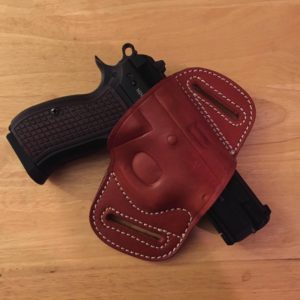 Read the mathematical expression in the title of this post. Any questions?
Read the mathematical expression in the title of this post. Any questions?
Of course, there are questions. After all, what is a gun (mostly) blog but “endless fussing about guns,” eh? But what we mean is this: too much fiddling with what you carry actually detracts from your ability to get proficient with what you carry. But even fussing and fiddling with guns, holsters, etc., is better than not carrying, so it’s most important that you carry.
If you got the impression that we’re about to beat our favorite “satisficing vs. optimizing” dead horse again, you’re half right: we’re certainly not averse to giving Deceased Dobbin a few good licks with Louisville’s finestkind equine motivator. But really, to say that the endless fanboy debates about this pistol vs. that pistol miss the point is like saying that Colin Krapernick and the San Francisco 49ers missed the Super Bowl — true, but understated to the point where one’s sanity comes into question. About 99 repeating 9 percent of the stuff written on the Internet (or in print) about self-defensive pistols is nonsense, compared to the overriding primacy of following Rule Number One of Gunfights: BRING A GUN.
Note that it’s not, “Bring a Glock,” or, “Bring a pistol whose caliber begins with point-four,” or, “Bring a pistol designed by John Moses Browning because he was the last firearms designer who was not a drooling, inbred retard.” A gun. Gun, generic, one each, color optional, caliber optional, maker optional.
Pure gun-counter heresy, that.
Are some choices better than others? Yes, but mostly in the edge cases. As much as it may tempt some people (Ian?), and as brilliant as Karel Krnka was, a Roth-Steyr Repetierpistole M.07 is probably not a good choice (for one thing, rotsa ruck finding a Kydex holster). Likewise, an old Jurras Auto Mag looks totally cool, but only a fictional movie character who was six-feet-many-inches tall would actually carry one; another not-a-good-choice. Nor are many cheap pistols, although you would learn a little about firearms lethality from the following exercise:
- Buddy up to a homicide detective in your town (or nearest equivalent, for those of us in too small/peaceful villages to have one).
- Get him or her to give you the caliber, and if known, make and model of the last 10 homicide guns; 100 in Chicago, as you want a whole month’s data. (Wouldn’t work for our town; to get to 10 homicides you have to go back to the Indian massacre of sixteen-fifty-something).
- Our guess is that the distribution will be, in order: 9mm, .22, .380, .32, .25 .40. And the brands will include approximately zero that have fanboys.
Yet people keep asking “is this one better than that one?” Eh. Fact is, it’s not 1910 any more. Most defensive autopistols and revolvers are pretty good. Even the cheap ones are safe to shoot and usually work. Tam summed this up recently in a really good post:
“So, which do you like better? The Glock or the M&P? Which one should I buy?”
Okay, first, I don’t know that I would say I really like either of them. The Glock is a lot easier to mess around in the guts of, if that’s the sort of thing that appeals to you. As far as shooting goes, they’re pretty much of a muchness. All these plastic cop guns are, really.
“Much of a muchness”? We’ll assume she did that for effect. Still, her basic point is there, and deserves to be belabored, like the rib cage of our expired equine, pining for the corrals:
If one really sings to you, buy it, but you’re kidding yourself if you think there are vast differences in performance waiting to be unlocked in one versus another.
….
This is the sort of stuff that matters when you add up hundredths and tenths over the course of a ten stage match and probably doesn’t matter dick across a convenience store counter or across fifteen feet of rainy midnight parking lot.
Ding, ding, ding. Do Read The Whole Thing™; this lady shoots more pistol rounds in a year than the average infantry platoon, and between her native curiosity and magazine work shoots a very wide range of good-quality pistols. She knows whereof she speaks; respect that.
And before anyone starts talking about this military unit uses this and that agency is known to carry that, there are two or three facts about military and governmental pistol purchases to bear in mind:
- Other things besides raw performance matter. Costs count. Maintenance counts. Compatibility with other kit and allies’ forces counts. (Will you ever fire your pistol whilst wearing a gas mask? Or need to use some foreign nation’s ammunition because that’s all there is? One hopes not). Manufacturing offsets count. And the performance criteria are weighted by somebody and his weights he puts on the various performance measures may not be yours.
- Performance results between pistols on a given test are usually very close: the SIG and Beretta entries were tied in the M9 testing; Beretta’s lower price broke the tie. FN and SIG were very close in recent testing for a Federal agency. Around 15-20 years ago, a special mission unit adopted .40 Glocks, but they only just edged out .40 Smiths, and both of those beat STI 1911s primarily on maintenance, not performance, grounds.
- In the military and even as a criminal investigator, your pistol is secondary to almost everything else in your job. If you’re plugging people with Ole Reliable, something has gone seriously awry with Plan A.
For a personal carry pistol, you might want to make a short list, and adopt the first gun you find that checks the few boxes, and carry it with confidence. For instance:
- Can I shoot it okay, and will I practice with it?
- Can I carry it safely and securely while wearing the clothes I usually wear, and doing the activities I usually do?
- Do I like it and feel good about carrying it?
If you like, we can go into the importance of each of those three points. Notice exactly zero of the have anything to do with the sorts of things that fill the pages of gun magazines, the pixels of blogs, or the vast featureless tundra of the gun webs.
See, it’s all about reflexive obedience to Rule Number One.
A Mystery Revolver with its Own Story
Long-time reader and commenter Jim Hall wonders about a revolver that is connected, one way or another, to two Vietnam veterans. “What is it?” he asks, and we have to admit we don’t know. A pistol copied from, or at least inspired by, the Colt .31 pocket revolver of 1849, with cylinder flutes like Colt introduced in 1862. We’re not experts in these, but it’s not a Colt, and it doesn’t have any visible markings.
The best thing about this mystery revolver, by far, is the story that comes with it. We’ll let Jim tell the story:
In 1971, dad had just returned from his 2nd tour in Vietnam, and was assigned as a recruiter in Kentucky. An older man walked in, asked some questions about the war, and was apparently trying to understand what happened to his son, recently KIA.
Dad took him out for a dinner, trying to calm the guy down. As they talk, the man tells him that he and his son had been into collecting antique firearms. This was the latest thing he’d found, and was supposed to be a “welcome home” gift for his son. It was obviously not needed in that role anymore, but he’d sell it and a few other odds and ends from their collection, stipulating that he only wanted them to go to another Army man, and not some idiot that would pawn it off at the first opportunity. Dad picked it up for 25 bucks, and another 20 got him an H&R single action .22/.22 magnum revolver.
The flutes in the cylinder resemble those on the Colt 1862 Police, but the 1862 Police has a rebated cylinder. Here is a pistol represented by the seller as a genuine 1862 Police. We’ll point out some differences between Jim’s mystery revolver and the typical Colt practice of the 1862.
The pistol is badly affected by wear and pitting, but still does not seem to have Colt levels of worksmanship.
Several details are clearly not Colt. One of them is a mainspring tension screw on the front strap. The screw present probably wasn’t the original (the head of the original probably was flush with the front strap), but Colt didn’t put one in this position, regardless. (Remington did).
Some of the nipples appear to have been removed or lost.
The grips of a colt are round at the butt end, and this one is squared off in cross-section. Compare the way a factory Colt interfaces with its trigger guard and grip (the ’62 higher up this post is typical) to the way this revolver does.
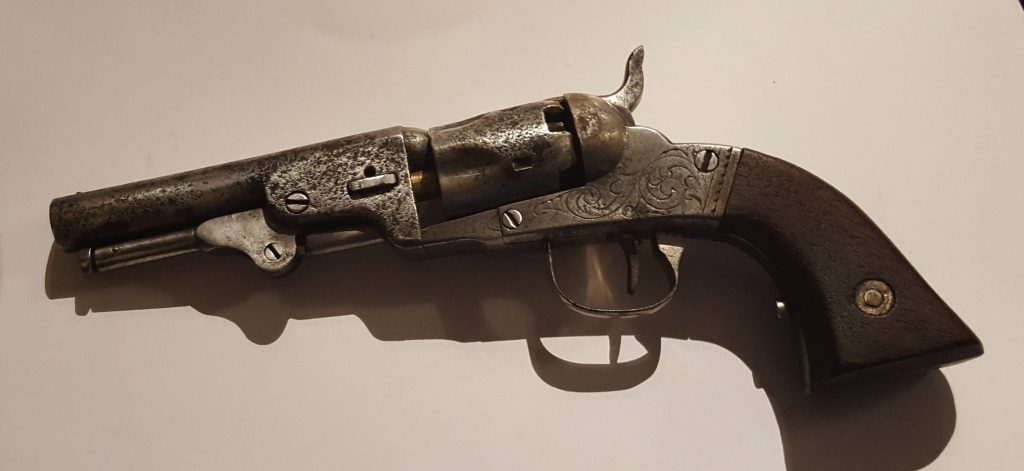
The Colt also has screws that also act as axles for the trigger and hammer. Compare the location of the screws on this revolver!
The trigger guard is odd and quite unlike any common Colt.
Now, the pistol that was Jim’s father’s, this heartbreaking “welcome home” gift for a kid who didn’t come home and grow old like his buddies, is Jim’s.
on my return from the sandbox, he presented it to me, along with the story behind it. looking on the net, it looks similar to early colt pocket revolvers, but there are no marks on it other than the scrollwork. it seems similar to an 1841 colt pocket revolver, and I’ve seen some pictures that look similar up until the early 1860s as well. I know it’s not worth a ton, but it’s got an interesting story and certainly is an uncommon find now.
Finally, here’s a close-up of the right side. Yes, all these images embiggen. 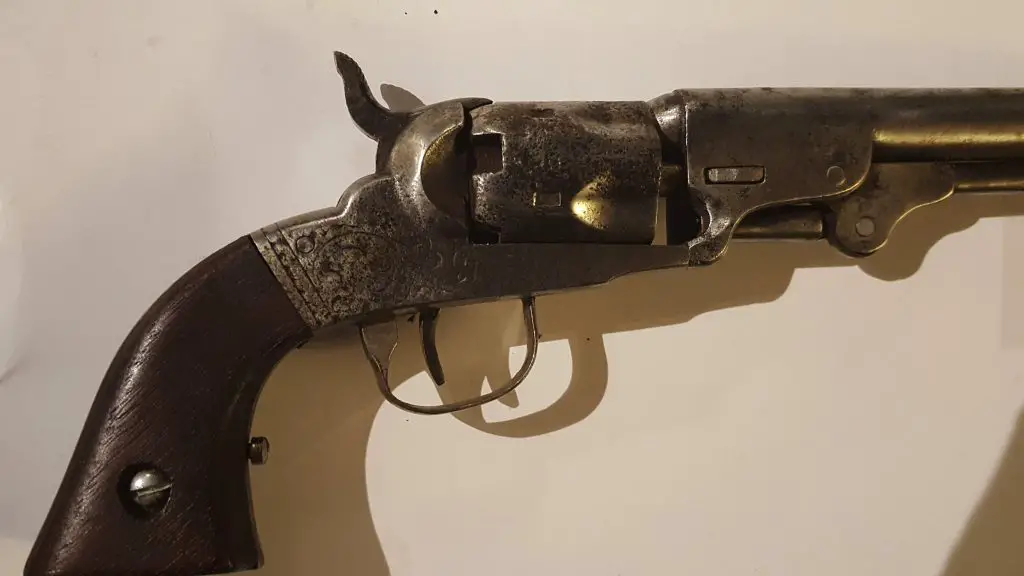
Naturally, something like this is an heirloom and not for sale. Could it ever be worth as much to anyone as it, and its back story, are to Jim?
Our first guess after looking over Jim’s pictures was that this is some kind of foreign, possibly Belgian, copy of the early Colt . It would have been made, almost certainly, before 1870. But it occurred to us that someone in the commenters may know these pistols better than we do.
We also think we might see the number “14” on the cylinder in some of the shots above.
One Gun’s Creation Story
These days, and for most of the last century, most of the guns we know and love are the creation of a team, even when they’re generally shaped by the eye and hand of one designer. And the designer usually works for somebody — the concept is often given to the designer by non-design, non-engineer business people or representatives of end users.
Recently, we came across the Creation Story of the relatively common (about 650,000 made) CZ-27 pistol. We have known for a long time that it was a simplified version of the Josef Nickl-designed CZ-22/24 (again, fingering one designer is a simplification: remember, teams). And we knew that the main designer responsible for the changes to the firearm was František Myška (FRON-ti-shek MISH-ka). We believed the gun to be created to be a simpler, blowback pistol in 7.65mm (.32 ACP) for police use.
The story is told various ways by various credible writers. Here’s Max Popenker’s world.guns.ru:
The CZ-27 pistol was developed in around 1926 by Czech arms designer Frantisek Myska in an attempt to produce simplified version of the CZ Vz.24 pistol, chambered for less powerful 7.65×17 SR Browning ammunition (also known as .32 ACP) and suited for police and security use. It was put into production in 1927, at arms factory in Praha.
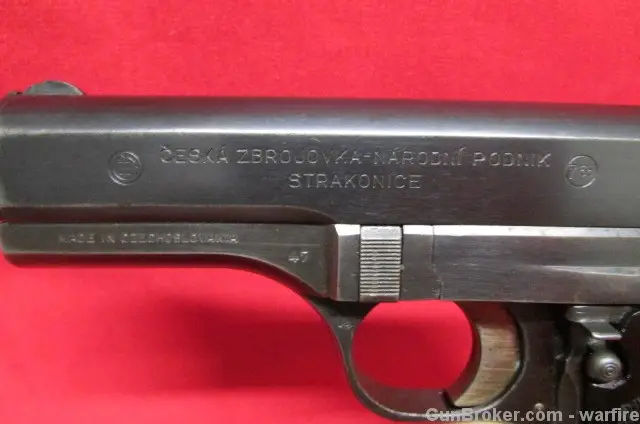 Max is generally correct there. (The pistol was made in Strakonice, not Praga (Prague), but the prewar ones are marked Praha and wartime ones, in German, Prag; that’s where corporate HQ was, even though the production line was in Strakonice, even though that wasn’t ever marked on a CZ-27 until after the war! Like in the example above. That is our one quibble with Max’s description, that, and the understated production figures. OK, two quibbles).
Max is generally correct there. (The pistol was made in Strakonice, not Praga (Prague), but the prewar ones are marked Praha and wartime ones, in German, Prag; that’s where corporate HQ was, even though the production line was in Strakonice, even though that wasn’t ever marked on a CZ-27 until after the war! Like in the example above. That is our one quibble with Max’s description, that, and the understated production figures. OK, two quibbles).
But Czech gunwriter Jiří Fencl, in a new-ish book on Great Czechoslovak Gun Designers, broke it down with much greater precision. Here’s a rough, on-the-fly translation of the story of the creation of the CZ-27 — as told by the designer himself!
František Myška later remembered, “In the course of the manufacture of the pistol vz. 24, one of the then-directors of the company names Beneš came to me (he was known for often happily engaging with the designers) and requested: ‘Mr. Myška, you’re a gunsmith. Could our ‘twenty-four’ be converted to the 7.65 mm cartridge?’”
“I immediately took paper and pencil, and began to draw. In recognition and consideration of the low-powered cartridge, the locking mechanism was not needed, and instead the barrel fixed in place with a pin below. The barrel chambered for 7.65mm. That also led to a smaller grip (smaller magazine). And the Pistol vzor 27 came into the world,” he concluded his tale.
Very well done. And the workshops were able to produce the Pistol CZ model 17 continuously from the year 1927 until the year 1950.
Less well-known are the variants of this pistol adapted for a sound suppressor, and a small-caliber training version for the .22 LR cartridge.
Indeed they are less well-known! We saw a silencer version (without its original silencer) cross the auction block last year, the only one in memory; and we’ve only even seen one .22 version.
Of the major variants, the most common are the German occupation guns, which are marked in the German language (naturally), and the least common the prewar pistol. The postwar pistol is also rare, but not so rare as the 1927-37 original. The postwar pistol seen here bears different markings from prewar guns; instead of CZ being “A.S.” (roughly, “incorporated”), it’s a “Narodní Podník” (“National Enterprise,” the Communist-era organization).
One collector’s website offers photos of some examples of this firearm from throughout its history: there are prewar and postwar Czechoslovak variants, and two different wartime German variants, all of which differ only in small details, finish, and especially markings. The example shown here is from our collection and is a postwar pistol, dated 1947 (by the “47” in front of the takedown catch above); it was replaced in 1950-51 by the vz. 50 pistol, which continued to be numbered in the same series.
Update on the FK Brno 7.5
We have written about this pistol before, but it’s had a long and arduous trip to market, and it’s still not really here. It may finally be coming (and here’s another allegation of imminence from four months ago). In any event, we haven’t got hands on one yet — hell, we haven’t seen one for sale, but we’ve found a couple of articles by people who have handled the gun, not just the press releases. And of course, there’s the manufacturer’s website.
Despite the inventors’ denials, and the gun and ammo’s own unique technology, it clearly owes a great deal to the CZ 75 and its descendants. (That’s not a bad thing, necessarily. After all, everybody owes a great deal to the M1911 and its descendants, too). The lockwork seems similar to the precision-oriented CZ single-actions.
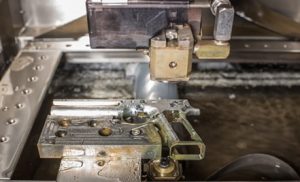 The pistol is manufactured conventionally, for a Czech firearm. That is to say its components are CNC milled from billet or from investment castings (possibly by Poldi, which has cast for ZB and CZ since CZ-Strakonice days, before CZ built the UB factory in 1936).
The pistol is manufactured conventionally, for a Czech firearm. That is to say its components are CNC milled from billet or from investment castings (possibly by Poldi, which has cast for ZB and CZ since CZ-Strakonice days, before CZ built the UB factory in 1936).
But the FK Brno 7.5 offers a unique high-velocity round, a unique buffer system, and unique sights. The FK 7.5 pushes .30 caliber copper bullet at 2000 feet per second, not quite rifle speed, but better than such remarkable rounds as the long-defunct .357 Auto Mag. Its numbers make the .357 SIG look like it has the parking brake on.
It’s otherworldly enough to generate considerable skepticism. When the FK 7.5 first came up on the radar last year, John Zent of American Rifleman noted its sudden appearance on the market had a certain “out-of-nowhere” quality. John Roberts a Guns, Holsters, and Gear also was unimpressed by the claimed velocity, because it can be matched by a 9mm firing an ultralight 50 grain round — delivering half the FK 7.5s energy.
Here is celebrity trainer Rob Pincus, with what he promises is Part I of a multipart article. Rob was invited to the Czech Republic to try the gun during its long period in ATF purgatorio, and has some interesting comments.
A High Capacity Handgun that fires a propriety [sic] 100 grain round at over 2000fps and costs over $5000. The round, by the way, is still moving at 1500fps at 100 meters… which is the distance at which the pistol is zeroed with a unique set of sights when it comes from the factory. As others in the above links note, the gun is relatively large, fires a very powerful round and isn’t going to be cheap. FK BRNO also claims that the gun is very controllable and capable of high levels of precision. And, the only guns currently in the USA are there for government evaluation so that importation could be approved.
Per Pincus, the company considers itself primarily an ammunition research company, which builds the pistol as a way to get its ammo concept into shooters’ hands. He hits these takeaways — and elaborates on each, so you’ll want to Read The Whole Thing™:
- FK BRNO says that they are an Ammunition Company that also makes a handgun.
- FK BRNO set out to develop a handgun that delivered AK-47 performance in regard to Terminal Ballistics at ranges between 50 and 150 meters.
- The 7.5 round delivers high levels [of] precision.
- The Terminal Ballistics are even more impressive than the precision capability.
He concludes: “FK Brno have done what they set out to do.” We’ll say again, Read The Whole Thing™, and we’re looking forward to the next part.
The tactical niche this pistol fills is unclear, although it seems to overdo what the Secret Service and Federal Air Marshals Service selected the .357 SIG to do. It is, without doubt, a magnificent engineering accomplishment, and the prototypes seen so far are beautifully finished. One clue is that, in its native country, it is available in a folding shoulder-stocked version, making it a near-peer of PDWs like the HK MP7 and FN P90 / FiveSeVen combination. It also appeals to people who love that kind of engineering for its own sake.
If it’s a success, it will seem less strange in due course. If it’s not a success, it will be a footnote to firearms history of near-GyroJet proportions. Either way, we want one!
Five Reasons to Own Sixguns
Revolvers have been declining in market share for three decades, a decline which really only got going 30 years after the last major military revolver user (the UK), crawled into the 20th Century. (Actually the last major military revolver user was probably the US, which issued revolvers to aviators, and to military police men and women who had difficulty with the 1911A1, up until the adoption of the Beretta M9 — but it was always a secondary weapon). They’re now rare as police firearms, and much less common than they once were as defensive firearms.
As revolvers’ presence in the police and civilian market has declined, their presence in crime has also declined. This is logical, as most criminals arm themselves with weapons diverted from lawful uses, generally by theft or straw purchase with many cut-outs and intermediaries. This increased use of automatic pistols in crime has actually been a boon for homicide and assault investigators, as toolmark evidence matching firearms to cases (cartridge type) or cases (cartridge) from one crime scene to another, has helped close more than a few cases (investigative type). Sumdood doesn’t police his brass when he rips his dope dealer, oddly enough; and he can’t police his brass when he does a drive-by, holding his Hi-Point sideways out the window.
Logisticians might dream of caseless ammo, but homicide cops don’t.
Revolvers’ mindshare has declined. They are seldom seen in TV or movies, except in period pieces or to mark a character as kind of old-fashioned (Rick in The Walking Dead with his long-discontinued Python).
Is the declining mindshare of revolvers a cause or an effect of declining market share? Both may be the right answer; market and mind share may be wrapped in a vicious circle, or spiral.
But there are a number of reasons for the classic, 1890s-style double-action revolver’s remaining children to still be used. Consider these five reasons to shoot sixguns:
- They are simple and, if quality products in good condition, reliable.
- They are indifferent to variations in ammunition.
- Misfire drill? Just fire again.
- Time spent loading can enforce a certain pace on a shooting session, improving performance.
- They can be enjoyable and educational to shoot; there’s a great variety of them.
Simple and Reliable
While a revolver’s mechanism seems fiendishly complex to those not mechanically inclined, it’s a simple mechanical mechanism. Compared to a typewriter or sewing machine there’s a lot less to go on — and compared to an automatic pistol, the same is true. Some of them are better than others, especially on durability. (An old, worn Smith is less likely to have lost time or need a gunsmith than a Colt of similar vintage. Or an NIB Taurus). 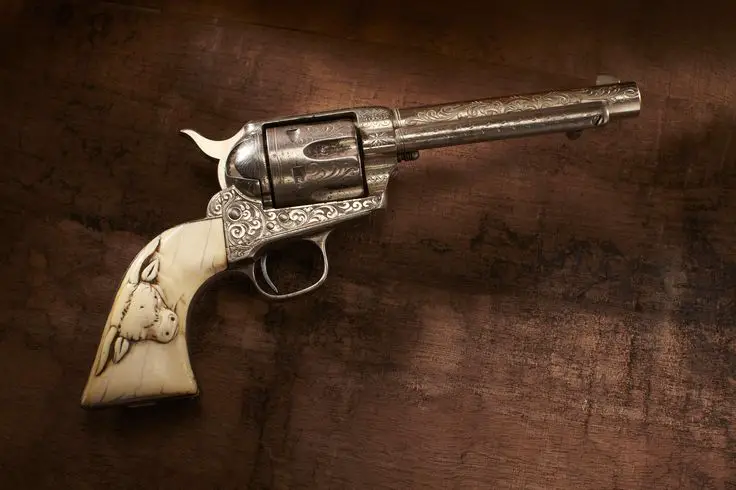 It’s also intuitive and easy to learn. There’s a t-shirt with a Colt SAA on it: “the original point-and-click interface.” Steve Jobs (who lifted it all from Xerox PARC anyway), eat your heart out.
It’s also intuitive and easy to learn. There’s a t-shirt with a Colt SAA on it: “the original point-and-click interface.” Steve Jobs (who lifted it all from Xerox PARC anyway), eat your heart out.
Indifferent to Ammo Variations
What ammo works with your carry gun? Sure, with modern autos the days of hollow-points not feeding are mostly over, but everyone has experience with ammo their gun does not like. Doesn’t happen with a sixgun. If the gun’s right, anything that chambers goes bang. Bang-on-demand is good.
What Misfire Drill?
As we mentioned, with a revolver you just point and click. If you do get a point and click and not point and bang, your follow-up shot is a trigger pull away (a hammer cock and trigger pull, if you’re really OG and toting an SAA or something like that). No auto pistol is that quickly back in the fight (or, for hunters, on the game).
Enforces Pace
OK, here we’re making a virtue of necessity. But anyone who spends any time on ranges has seen the shooter with more ammo than sense, blowing through 200 rounds without making a great deal of effort to hit anything. Hey, it’s a free country, and if that’s how they want to make fun let ’em knock themselves out, but… there’s a lot to be said for taking that same amount of time and firing 50 rounds with care. The mechanical, muscle-memory drill of dumping cases and loading rounds can be a great time for considering what went wrong with your last six shots, and what you can do better with the next six.
After all, only the hits count, and even 3 out of 6 into the target at 7 meters is better than the NYPD does out of a 17-round Glock mag.
Enjoyable Variety
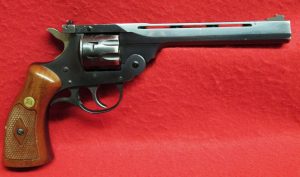 The different revolver mechanisms are a blast. Everybody who has never shot a Single-Action Army before gets a thrill out of it, the first time. Ejecting the cases and loading them is fun, and they you can tell the guy or gal, “And… they were expected to do this on a horse.” Instant connection to distant times and places. Likewise, tip-up revolves.
The different revolver mechanisms are a blast. Everybody who has never shot a Single-Action Army before gets a thrill out of it, the first time. Ejecting the cases and loading them is fun, and they you can tell the guy or gal, “And… they were expected to do this on a horse.” Instant connection to distant times and places. Likewise, tip-up revolves.
A favorite uncle had a Harrington and Richardson 9-shot .22; it looked like a baby Webley, and was great fun to pop it open and fountain .22 brass around.
And then, there are the revolvers of 1,000 detective shows, and plenty of revolvers with interesting military history. (Colt and Smith M1917s are nice, beefy guns with a great back story and some weird engineering to let them shoot rimless .45 ACP). Early police double-action .32 pistols are fun and easy to shoot, built like jewels, and dirt cheap right now. There’s always some bragging rights in a Smith & Wesson Model 29. (Or a .500 if you’re diffident about carrying Dirty Harry’s gun, or concerned about the low power of the .44 Mag).
Everybody ought to have a revolver.
But then, the question becomes, which revolver?
Name That Round!
Hey, don’t be surprised if it throws you. It sure threw us, and we thought we knew guns and ammo!
Need a hint? It’s .30 caliber, and a bit of a Frankenstein monster with a rebated rim and a sharp shoulder.
Need another? It was created as a deer-taking round, gerrymandered to fit a unique state law.
Give up? Explanation after the jump.
Continue reading
Monster Firearms Auction Thurs-Sunday at Rock Island
 Rock Island Auctions is holding their largest-ever auction this weekend (although the action starts Thursday). Over 10,000 firearms are included in many thousands of lots (some lots include up to six arms) in this Regional auction, and there’s something there for everyone. Unlike a Premier auction, which has predominantly high and very-high-end collectibles, this auction has pieces for the beginner as well as the advanced collector, and some guns for the practical shooter or gun retailer.
Rock Island Auctions is holding their largest-ever auction this weekend (although the action starts Thursday). Over 10,000 firearms are included in many thousands of lots (some lots include up to six arms) in this Regional auction, and there’s something there for everyone. Unlike a Premier auction, which has predominantly high and very-high-end collectibles, this auction has pieces for the beginner as well as the advanced collector, and some guns for the practical shooter or gun retailer.
Ian at ForgottenWeapons.com often does videos on some of the exotica for sale at these auctions.
The Rock Island auction catalog is here online. It’s not at all hard to set up an account and bid online, but make sure you understand the payment terms, particularly the nasty little auctioneers’ convention, the Buyers’ Premium.
The Rock Island blog promotes some of the more interesting pieces. This report on a particular Japanese Type 99, tied to the Battle of Saipan by a plaque on the right side of its butt, is a tour de force. Despite the non-guarantee-able provenance of the gun, the plaque does align (as the long post proves) perfectly with the history of the invasion, and the author tracks it to a probable capture by some member of the New York Army National Guard 27th Division.
The Rifle – Japanese Type 99
By now, you may be wondering how this Japanese Type 99 is tied to the Battle of Saipan. Attached to the right side of the butt is a small brass plaque that reads,
“At 0440 on the morning of 16 June 1944, an American infantryman just landing on the shores of Charan-Kanoa Beach, Saipan, threw a hand grenade at a Japanese sniper killing him instantly. The forward stock of the rifle was damaged by the explosion. Presented by Commander Walter Bantau. USNR.”
Besides giving us a really cool story, and perhaps the ultimate tangible connection to it, the plaque also provides some very helpful information that pinpoints its place in history – where it was and what it was doing.
Of course, the dates and location are provided on the plaque, but what other clues can we obtain? For starters, based on the landing time we know that the man who threw the grenade must have been on of the soldiers of the 27th Infantry Division of the National Guard that arrived long before dawn broke on D+2, June 17. The plaque does indicate a landing on June 16, and many sources are conflicted on this information. In the research for this article, it was found that at 0330 on June 16, Marines were busy holding off a desperate second Japanese counterattack attempting to retake the beach and “push the Americans into the sea.”
We also know that in the 27th, there were only three infantry regiments: the 105th (formerly the 2nd New York), the 106th, and the 165th (formerly the 69th, a.k.a. “The Fighting 69th” and “The Fighting Irish”), so the fortunate grenadier must have been in one of those regimentss. Each of those regiments is comprised of men from the New York Army National Guard so we can say with some certainty that it was likely a New Yorker who killed the sniper on the beach that day.
The Type 99 not only has that interesting plaque (and the potted history of the Saipan campaign that Rock Island has assembled for its next owner), but it is also one of the finest examples of a bringback Type 99 we’ve seen in a long time. It’s not the usual ground-mum beater!
Good luck and happy bidding. It’s a safe bet that you’ll be bidding against us if you’re bidding on anything both rare and Czech or Czechoslovak.
In Which We Fisk the Worst Article on the M17 Selection
Somebody had to write the worst article on the M17 Modular Handgun System program. And this guy did it, at Strategy Page. He knew just enough not to sign it, whoever he was, so he may not be a complete dullard. But almost every fact that’s in the story is wrong, demonstrably wrong, I-was-too-lazy-to-Google wrong, I-was-too-dumb-to-ask-anybody wrong.
We used to say in the Army “as wrong as two boys kissin’,” or maybe a slightly stronger version of that, but we can’t say that any more. But that’s how wrong this article is.
Let’s hit some of the high points:
First, the title: “The Low Bidder And The M9 Tragedy.” Er, what tragedy?
The U.S. Department of Defense has finally, after a ten year search, decided on a new standard pistol, to replace the much hated Beretta M9.
“Much hated”? Meh. Lots of guys prefer another pistol. We could always work with the M9. A pistol is too inconsequential to waste hatred on, and any professional just takes the pistol he is issued and works with it. That’s how the game is played, by the people for whom “game” is only a metaphor, not something executed on a colorful board, with cardboard counters and a polyhedral die.
The new pistol is a variant of the SIG Sauer P320, which lost out to the Baretta in 1985 because the Baretta 9mm was a little cheaper.
One brief declarative sentence, multiple factual errors:
- It is a P320, not a “variant” except in that it has the safety and anti-tampering options SIG has offered to “fleet buyers” all along.
- The P320 did not lose out to anything in 1985 as it was decades from being designed. Indeed, its forerunner the
P230P250 (which has little in common with the P226) was decades from being designed, and the230250 was on the market for a long time before the 320 design began. - Beretta is not spelled Baretta. They’ve been spelling it with that first “e” since fourteen-hundred-and-something. Repeating the misspelling doesn’t make it correct. (But wait, he’ll misspell it twice more, but misspell it differently, down the page).
- The trials in which SIG and Beretta were both judged as suitable took place in 1984. And yes, the Beretta was less expensive. (Significantly, not “a little.” Especially when you’re buying hundreds of thousands of the things). Beretta won a previous trial outright (JSSAP), but SIG did not participate. Cost is a real-world part of every weapons buy, whether it’s a billion-dollar ship or a buck-fifty bayonet sheath.
- Some units had been using Berettas earlier than official adoption, and that may have given Beretta an edge, back then.
- The pistol that SIG entered was a P226. This is exactly like a P320, except that its frame is made of different material and designed differently, it was designed from the bones out for modularity, it has a completely different trigger system and controls and manual of arms that the 226, and has exactly zero parts that interchange with its SIG stablemate.
- For the innumerate, study this arithmetic: 226 ≠ 320. There will be a test.
We note that most of the errors this guy made seem to come from the Wikipedia page on the M9, which is almost as messed up as the Strategy Page article… but not as messed up, because copying guy didn’t understand what he was copying. One of Strategy Page’s 400-lb aspie wargamers?
Whew, that was the first sentence. Hey, are you guys ready to move on and try another? Because this whole fisking is around 4,400 words (Holy Wall O Text Batman!), we’ll continue it after the jump.
Continue reading
Can You Help These Guns Find a Forever Home?
And can you have too many guns? Brownells says yes, you can. Well, they can, being a dealer… and they’ve got a clearance running on firearms. (Sorry, overseas readers. Your bad fortune today).
Follow this link to go there: Brownells Firearms Overstock Sale.
All the guns in question are new overstock. The pipeline is jammed with ARs in particular, that were produced in anticipation of an Omigawd-Hillary!-Won run on gun dealers nationwide. That backed-up inventory (and the costs of storage and carrying, especially with manufacturers, jobbers, and dealers who are leveraged and making payments on this inventory) is putting a hell of a downward price pressure on the AR market. For the premium brands, it’s showing up as a sales slowdown or a change from backlog to inventory. For the bargain brands? It’s race to the bottom, pricewise.
What you’ll find are 20 models of overstock firearms, including:
- Quite a few ARs from many vendors’;
- Some under $500, an unheard-of price a couple of years ago;
- One AK;
- Quite a few inexpensive handguns, including S&W (which has a good reputation) and Taurus (which only has a reputation);
- A few expensive handguns, including an H&K VP9, for those who seek a BDSM relationship with their pistol manufacturer.
All at good prices.
It is a very good idea to line up your transfer dealer first. A lot of dealers get very cheesed off when you use them to transfer a gun you bought on a deal like this (or from a cutthroat discounter like Bud’s or KY) and you bought it at a price that they can’t get wholesale. Some dealers don’t mind, and actually pursue transfer business. You want to be doing your transfers with the second guy.
If you’re a dealer, and you’re the first guy, our advice is don’t badmouth Bud’s or KY (or a clearance at Brownells). Just treat the customer right, price transfers reasonably and do ’em quickly enough that you’re not losing on him, and try to take the opportunity to (1) sell accessories, which have a way better margin, and (2) build a relationship with the customer.
Sure, some customers are bottom feeders who will put themselves through anything to save $5 and think customer loyalty is for chumps. But for every one of those, and every one of the guys who wants to spread his business around all the local shops, there’s a whole bunch of people who like to settle in with one gun dealer. In almost every business, your best business is repeat business, and your next best is referral business. That’s 100% certain-sure true for gunshops.

Kevin was a former Special Forces weapons man (MOS 18B, before the 18 series, 11B with Skill Qualification Indicator of S). His focus was on weapons: their history, effects and employment. He started WeaponsMan.com in 2011 and operated it until he passed away in 2017. His work is being preserved here at the request of his family.

